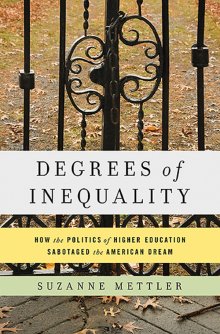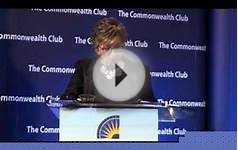 America likes to think of itself as a country where the doors to college are open to all, where anyone can earn a bachelor’s degree through hard work and academic merit, and where public support for higher education is unwavering. Reality belies the vision.
America likes to think of itself as a country where the doors to college are open to all, where anyone can earn a bachelor’s degree through hard work and academic merit, and where public support for higher education is unwavering. Reality belies the vision.
The doors are wide open for the privileged, but opportunity narrows considerably for the less fortunate. The bachelor’s is eminently reachable for those who stick with their studies — indeed, the master’s degree is coming into vogue for many — but huge numbers of promising students who start college don’t finish.
What about public support? The synergy between federal and state governments that propelled the phenomenal expansion of higher education in the 19th and 20th centuries has all but vanished, Suzanne Mettler writes in her provocative new book, “Degrees of Inequality.” The Cornell University political scientist argues that this drift in public policy over the past quarter-century — in Washington and in statehouses — has exacerbated gaps between the haves and the have-nots, undermining the ideal of college as an engine of upward social mobility.
For much of the nation’s history, government actions reinforced the ideal. Consider the land-grant acts of 1862 and 1890, which helped launch many public universities (as well as private ones such as Cornell and the Massachusetts Institute of Technology); the G.I. Bill to subsidize tuition for returning World War II veterans; the postwar boom of federal funding for university research; and the creation of what became known as Pell grants for needy students in 1972. These far-reaching acts of Congress, in tandem with aggressive state backing of public flagship universities, regional universities and community colleges, helped make U.S. higher education the envy of the world. It wasn’t just the prestige of Harvard, Yale and Princeton.






